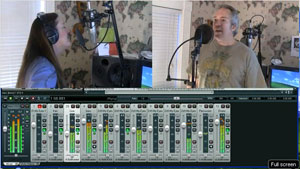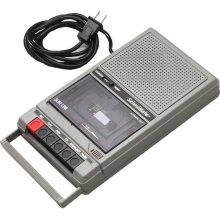 The video for this is finally done! Recently we published an article on how to take a song apart (figuratively) in order to learn how the pros record music. In order to demonstrate this concept, we used a song from Joss Whedon’s Dr. Horrible’s Sing-Along Blog. The song is called My Eyes (sometimes referred to as “On The Rise”), Music by Jed Whedon; Lyrics by Maurissa Tancharoen, Jed Whedon, and Joss Whedon. That article is here https://www.homebrewaudio.com/cover-recording-of-my-eyes-from-dr-horrible
The video for this is finally done! Recently we published an article on how to take a song apart (figuratively) in order to learn how the pros record music. In order to demonstrate this concept, we used a song from Joss Whedon’s Dr. Horrible’s Sing-Along Blog. The song is called My Eyes (sometimes referred to as “On The Rise”), Music by Jed Whedon; Lyrics by Maurissa Tancharoen, Jed Whedon, and Joss Whedon. That article is here https://www.homebrewaudio.com/cover-recording-of-my-eyes-from-dr-horrible
We were asked to do a video of the result and have finally finished that, though it took several days longer than we (and by “we,” I mean me:)) anticipated. The result was worth it though. See below:
[jwplayer mediaid=”4381″]
The detailed, step-by-step tutorial version of the video has been added to “The Newbies Guide to Audio Recording Awesomeness” video course, as well as to The Newbies Guide To Audio Recording Awesomeness 2: Pro Recording With Reaper.
Cheers!
Ken
Archives for July 2011
EQ As The Miracle Solution? What Equalization Can – And Cannot – Do
It is important to understand that use of equalizers (EQ) to enhance audio. This article talks about what EQ can and can’t do. It focuses more on live audio (the site deals with a lot of church performance issues), but the concepts apply to recording as well.
Read the full article here:
EQ As The Miracle Solution? What Equalization Can – And Cannot – Do
ProAudio.com Launches "12K Giveaway" Sweepstakes
Home Recording Equipment – Accordions & Didgeridoos: Microphone Techniques… The Old Soundman: Lawyers & Open Mics Church Sound Files: The Nature Of Soundcheck…
Read the full article here:
ProAudio.com Launches “12K Giveaway” Sweepstakes
Less Can Be More? Ways For Musicians & Engineers To Work Together In Harmony
Music Recording – The past 50 years have witnessed the birth of rock, punk, ska, hip hop, electronica, emo and so many other genres of music, that one has to be either obsessive compulsive (or in college) to distinguish between them all. During this same period, there have been countless refinements and enhancements in the technology, that allow us to record, play and appreciate music.
Read the full article here:
Less Can Be More? Ways For Musicians & Engineers To Work Together In Harmony
Audio Recording Equipment I Cut My Teeth On
 Over on the Home Recording Forum, someone started a post entitled: All You Old Farts – Born Before 1967. Now I don’t know what the significance of 1967 is, but by that definition (born in 1964), I guess I’m an old fart (even though I LOOK fabulous…shyaa). The idea was to get some idea what audio recording equipment we used way back when.
Over on the Home Recording Forum, someone started a post entitled: All You Old Farts – Born Before 1967. Now I don’t know what the significance of 1967 is, but by that definition (born in 1964), I guess I’m an old fart (even though I LOOK fabulous…shyaa). The idea was to get some idea what audio recording equipment we used way back when.
Anyway, the question was:
Come on tell us what gear were you weaned on? Inspired by the “how do you know so much post”
Here is my answer, for whatever educational value it is worth:
Wow, I’m officially an old fart? Do I get a card or something?
I started out with an old cassette recorder similar to the Hamilton Electronics HA-802 Cassette Player and Recorder. I would play a guitar part and sing along (or play another guitar part along for those cool Jim Croce songs) while recording into my brother’s boom box. I used the little built-in condenser mic for both. Then I would play those 2 parts back from the boom box onto my cassette recorder as many times as I needed instruments and harmonies. This hiss was incredible.
Eventually I graduated to doing the same thing but with better machines, like the ones in entertainment centers, and used a PA mixer in there somewhere. Finally, in 1988, I bought a Tascam Porta 5 4-track cassette recorder. That was a life-changer. One more 4-track cassette machine and a Sony DAT machine later, I got my first digital machine, the Roland VS-840. The next year I bought the VS-880 off e-bay for the amazing deal of $1200. That was my primary throughout the early 2000s, when I added outboard gear, monitor speakers (starting with Alesis Monitor Ones…now using the Event TR-8s), separate mic preamp (the Peavy VMP 2 Tube mic preamp, which I still use), compressor, EQ, etc. Then I made the jump to doing everything in the computer right around 2003, using Adobe Audition. Eventually I added Reaper as my DAW and continue to use AA as my editor.
That’s about it in a nutshell from this old fart.
Cheers!
Ken